Introduction by Geoffrey: Here’s a new post written by a reader, this time regarding a subject that we don’t know much about: watches. Luc, on the other hand, is studying watchmaking: you are, therefore, in good hands. We met during his makeover and, having sympathised with him, I offered him the chance to share his passion and knowledge with the biggest number of people possible. Here you have, then, a two-parter that’s pretty damn useful for those who still don’t really know which watch to go for. Over to you, Luc!
How to choose a watch?
Sometimes you here people say that ‘the watch is the only jewel in a guy’s armor’.
It’s true that the watch is a powerful accessory in an outfit: it can polish off an outfit as well as completely demolish every scrap of elegance that you put so much effort into establishing… Your watch should, therefore, be chosen with care, otherwise you’re better off not wearing one!
Your watch should match your personality, more than falling into a category of good or bad taste: you have to like it. It’s a bit like choosing a perfume: it shouldn’t be something you ‘have‘ to wear on your wrist to finish off your outfit, but rather completely the opposite, it should be integrated into your look as if it were a part of you.
When we see you, your watch should not be the thing that we spot first. But it is a detail that we should notice and that should bring a positive element to your outfit. It would seem that women (and men, too, for that matter) pay particular attention to this accessory/jewel because it allows us to get a better idea of your personality and social status.
First things first, a bit of basic vocab
1 – strap (here in leather) (you may here bracelet when talking about a metallic strap)
2 – lugs (allows the attachment of the strap)
3 – round casing. They exist in all shapes and sizes (square, triangular…) and all materials
(plastic, or platinum, aluminium…)
4 – crown (allows you to set the time, date, re-wind)
5 – Index (the numbers 1,2,3…and the gradients)
6 – the name of the brand, the logo
7 – the little second hand (if there isn’t one, there’ll be a central second hand)
8 – blue hands
9, 10 and 11: Complications: the information given by the watch, other than the time.
9 – date
10 – power reserve (how much time remains before you’ll have to re-wind the watch)
11 – phases of the moon
12 – Dial (often called the face) (plaque with the patterns on, underneath is wear the magic happens with the ‘motor’ of the watch)
13 – Crystal (part of the watch that protects the face, can be : sapphire, mineral, and acrylic)
There are two kinds of watch – ‘mechanical’ or ‘quartz’
Mechanical watches
Mechanical watches are widely seen as having a ‘grandpa’s watch’ image. And yet, there are many innovative designs to be found using this kind of watch (sometimes they’re even too futuristic.) However, to get hold of good quality items, you absolutely have to look at high–end ranges.
Out with mechanical watches from Russia, Eastern Europe or anywhere else for that matter! Indeed, they’re made with poor quality steel and the design means that the parts don’t function well together…they break before you know it and are sometimes irreparable.
Today, then, buying a quality mechanical watch that will make requires a large budget: more than $1200 … and that’s just to buy. Indeed, you need to take into account maintenance costs, too: a complete revision every 3-5 years max, coming to between 650 and 6500 dollars (or more) for high-end items. And that’s without mentioning waiting times…which can be very long indeed.
This isn’t necessarily the case when it comes to vintage watches but you’ll need to be passionate and know your stuff in order to spot a bargain. It doesn’t apply to watches made with movements from ETA either (ETA is a business that produces parts and movements for watches), which come with the advantage of often having a very nice design, quality Swiss clockwork and a price tag of around 200-650 dollars.
I’m immediately going to make a little point on the side about high-end watches that sell like hotcakes: some luxury brands sell more than a million watches per year…I doubt – in spite of their generally elevated price tag – that wearing such a watch on your wrist will allow you to really express your personality and originality.
Movements by A. Lange & Söhne, a great German brand – you’ll notice the finishes
Amongst mechanical watches, we can also distinguish between those that need to be rewound manually and those that are automatic.
- An automatic watch has a set of parts called the ‘automatic module’ which allows the watch to be rewound (or for ‘the motor’s energy to be replenished’) as the wrist is moved throughout the day. You take off your watch before going to bed, pick it back up again the next morning and it still works. No need to re-wind it unless you haven’t worn it for a few hours/days (depending on the power reserve of the watch). You therefore need to move to make it work!
- A watch that needs to be rewound manually needs to be rewound daily in order for it to work. You just have to turn the crown (it takes less than a minute in the morning and evening) to give the watch some energy.
An automatic watch offers undeniable advantages and an ease of use and doesn’t cost much more than a manual model.
Quartz (or battery-powered) watches
Quartz watches have a significant advantage when compared to mechanical watches: they are ultra-precise. The quartz movement, even a Chinese one that costs around ten bucks, is still more precise than the high-end mechanical movement that’ll cost you 50 000 dollars.
Another positive point: decent models can be found in all price ranges, from 50 to 500 dollars, there really is a great selection on offer. The budget is therefore more accessible and the maintenance consists merely of changing the battery that’ll cost you around 10 dollars (sometimes the whole movement will be changes but that still only costs between 20 and 120 dollars). Watch out, when it comes to high-end versions, you’ll be billed for a complete revision, so bank on sending 300 dollars or even much more.
Girard Perregaux and Omega (high-end) Quartz movements. You can see the battery.
What style of watch?
Firstly: try it on for real
The golden rule to follow is simple (and it’s the same for how to choose sunglasses): you have to see AND try a watch on in the flesh! Don’t buy online without having tried on a watch, it’s really important!
Why? Because, even if you have all of the technical details, a photo or a 3D image isn’t the same as reality. Materials reflect light in different ways, there are different effects of the material…like with clothing.
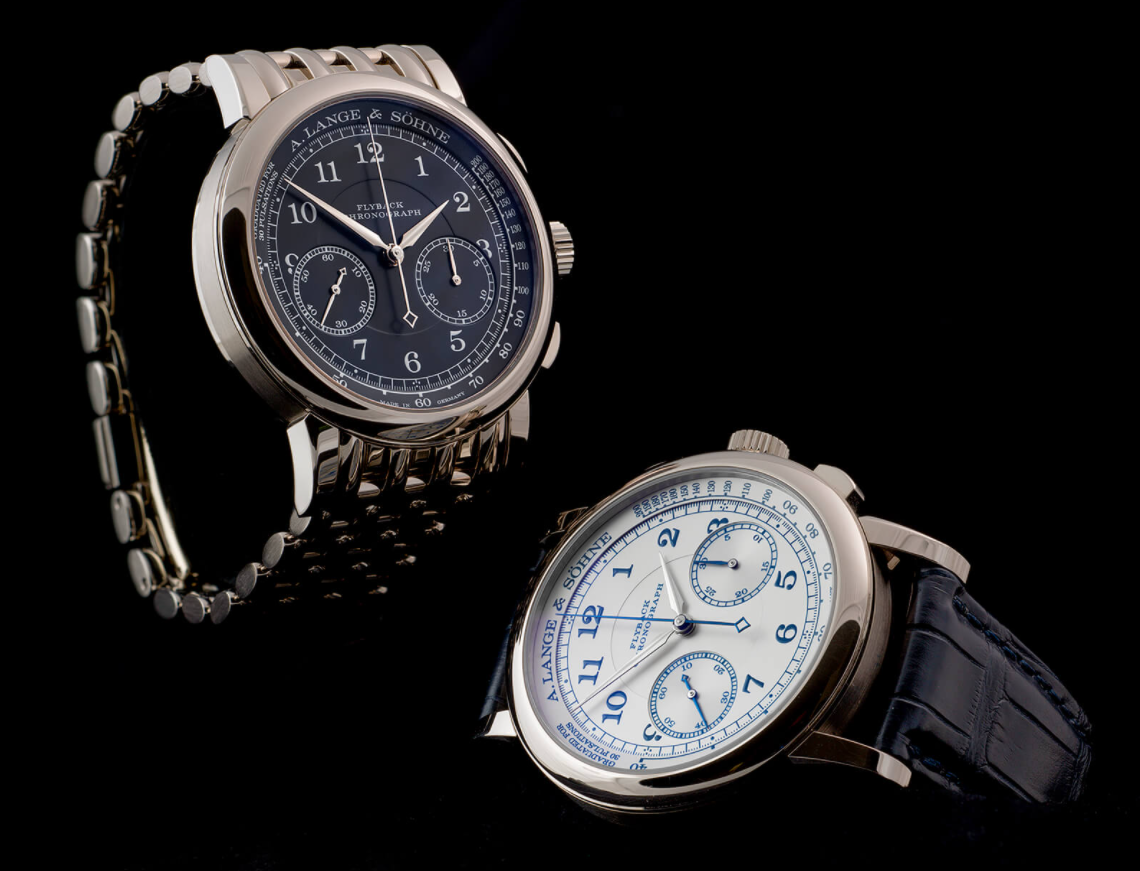
Photo evidence: on the left, a photo that’s been altered or a 3D image; on the right, a photo taken in store. In both cases, it’s the Chronographe Flyback 1815 by A. Lange & Söhne ($34,000).
I can’t give you any leads when it comes to finding THE watch (since it depends on your personality, your tastes, your social standing…) however, I can give you hints and tips when it comes to avoiding certain watches. Like with clothing, I’m going to use the basic criteria: size, material, design (the equivalent of fit, material, cut).
The size of the watch
The watch has to be proportional to your wrist. This goes beyond very precise measurements because it’s also a question of how it feels. That’s why you need to try before you buy. You absolutely have to avoid tiny watches that make your wrist look feminine and watches that are so big that the watch case goes beyond your wrist.
Oversized watches are forbidden! (even if today they’re making even bigger ones…) They’re just ugly. Little reminder: watches shouldn’t be blindingly obvious to other people, they should be discreet!
In a similar vein: no huge crown or enormous buttons on the sides, it shows a complete lack of elegance and finesse.
A strap is the right size when you can put your index finger in between the strap and your wrist, and no more than that (except for diving or sport watches, they’re tight against wetsuit overalls).
Stowa Antea on the left, Stowa Pflieger on the right (around $800). Thanks go to Vincent for taking the photo.
Watches’ straps fabric
For the strap: avoid plastic at all costs. It’s cheap, ages badly…
Go for leather or steel (however, steel links can pull and pluck hair). Indeed, there’s gold, platinum etc…Aluminium has a good resistance/lightness ratio. Warning: if you have an allergy or sensitive skin, avoid the materials associated with it.
There are also straps known as ‘NATO’ straps which have military origins. They’re very resistant, comfortable and hypoallergenic. They have sport connotations and bring an undeniable touch of laid-backness to an outfit (which can be an interesting contrast).
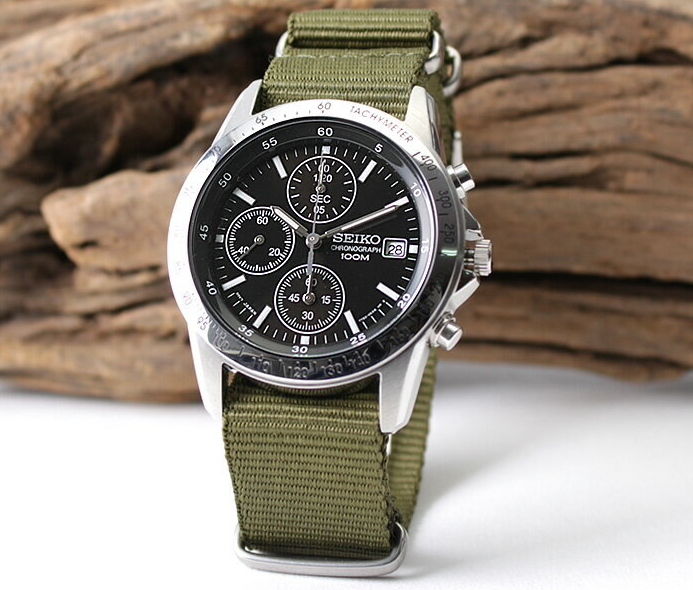
For smaller budgets: Seiko Military with a Nato (less than $150).
For the casing: they’re often plated or rhodium treated (a thin layer of gold, rhodium or something else is added to the base material for aesthetic and/or technical reasons). If you’ve got a plated watch, warn a watchmaker before they do any repairs…if they polish it to get rid or a scratch, you’re in for a nasty surprise!
For the glass: they’re often plexiglass (you find glass called ‘sapphire glass’ for high-end products). There are also ‘scratch resistant’ ones. You can get rid of little scratches by polishing, if not you can change the glass.
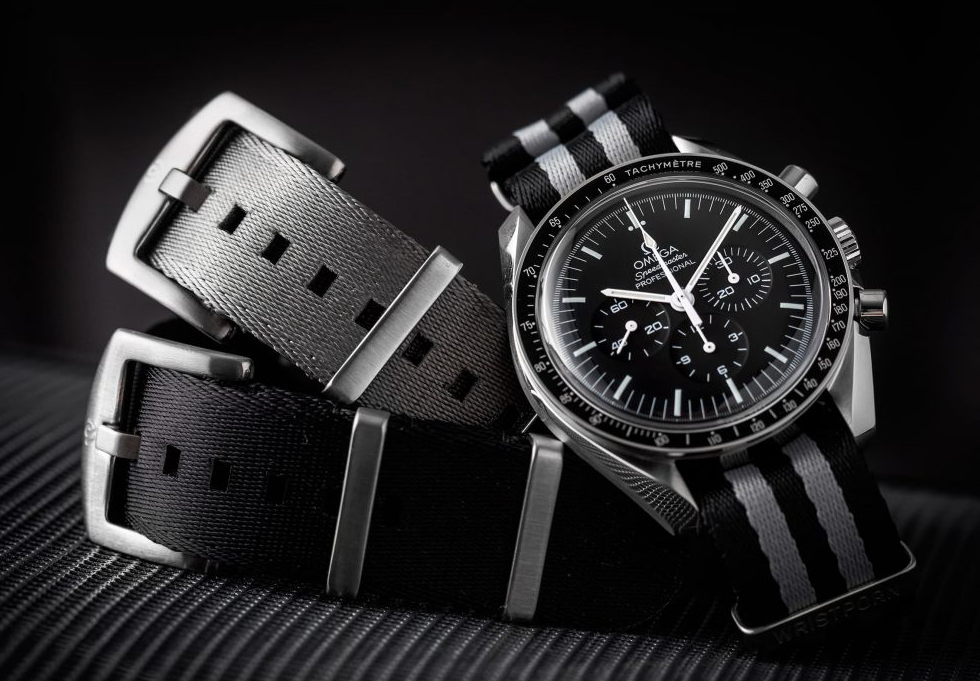
Omega Speedmaster 861 with a NATO strap ($3000 second-hand).
On the whole, you should avoid watches that are too futuristic, with digital displays reserved for adolescents or sportsmen.
Criteria to bear in mind
-
Strap: not too futuristic, not too imposing in comparison to the watch, comfortable, easy and secure opening/closing.
-
The Pins: nothing too original, they should go with the casing.
-
Casing, crown, buttons: nothing too original or too big.
-
Glass: avoid magnifying glass allowing you to read the date.
-
Face: not overloaded with stuff (even if it’s a time recorder with 3 meters!), avoid flashy colors, if you want a white face: avoid refrigerator white (off-white, cream and beige are better), avoid big brand logos that are too imposing.
-
Hands: not too fat! Not too much luminessence, no patterned hands shaped like hearts etc. I find that blue-stained hands have the nicest effect. No digital display.
-
Index, numbers: not too big, you’re not doing a sight test by telling the time from your watch.
-
Hatches and dials (that allow you to read the date, seconds etc): avoid ones that are too obvious and ruin the harmony of the watch face, avoid having them everywhere (too much information kills information).
-
Back: it might be glass so that you can see the mechanics and the inner workings.
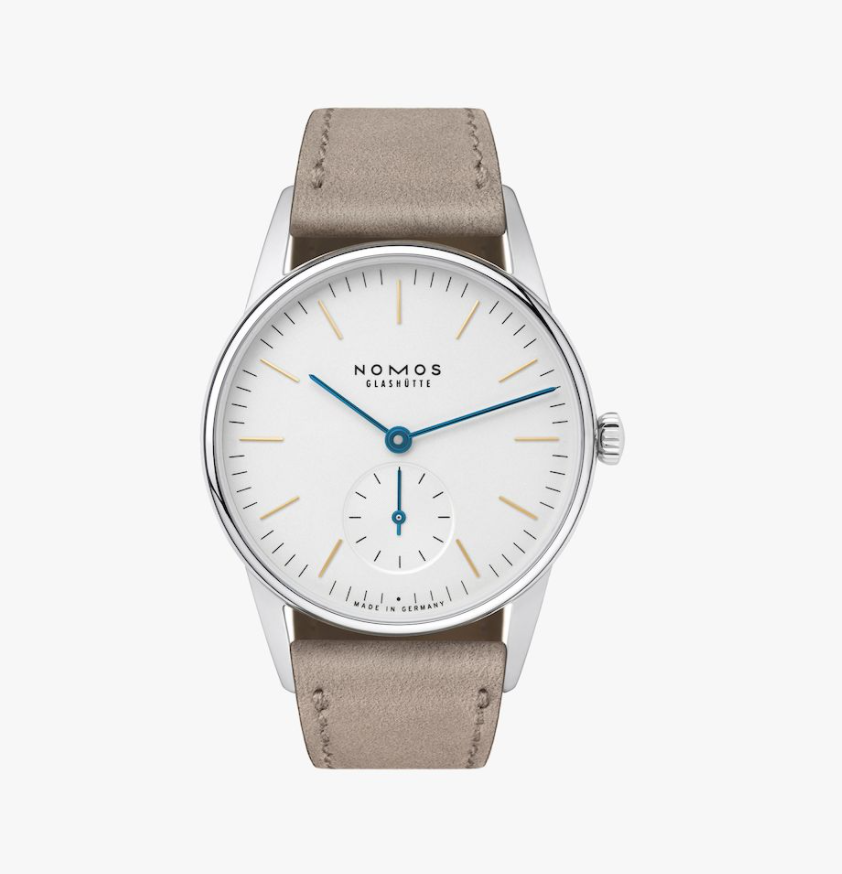 -> NOMOS Orion watch by NOMOS Glashütte, an uncluttered design ($1400 second-hand).
-> NOMOS Orion watch by NOMOS Glashütte, an uncluttered design ($1400 second-hand).
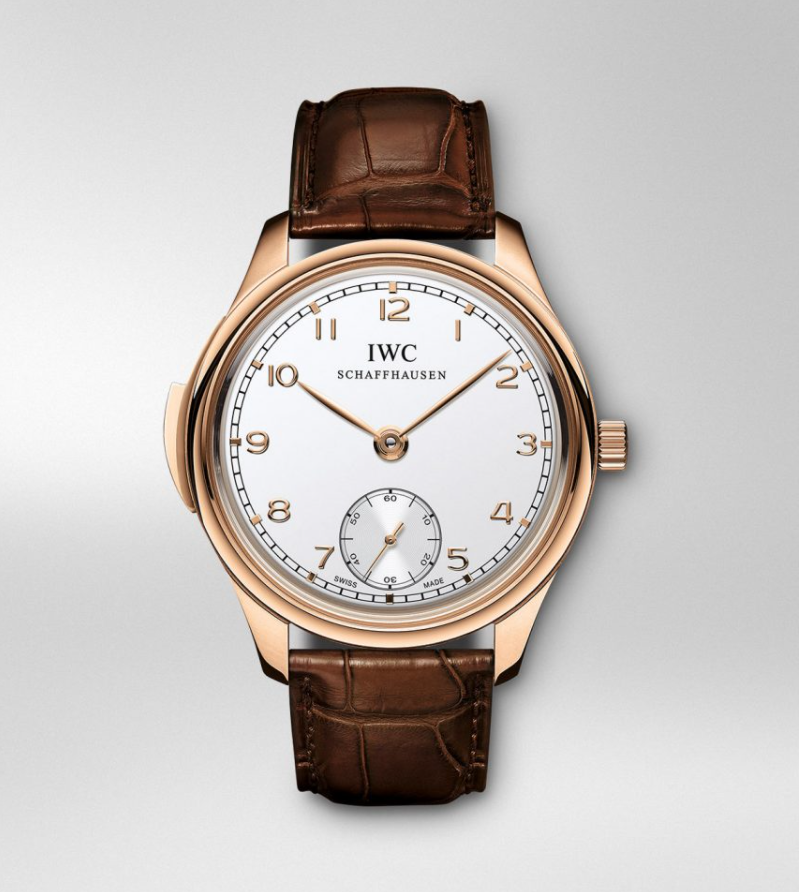
-> Portuguese watch a minute repeater from IWC, you can see the inner workings thanks to the glass back, with a second hand where 9 would be. Luxury in all its simplicity: platinum casing and minute repeater (one of the most expensive things to make and regulate) with a price tag of $135,000.
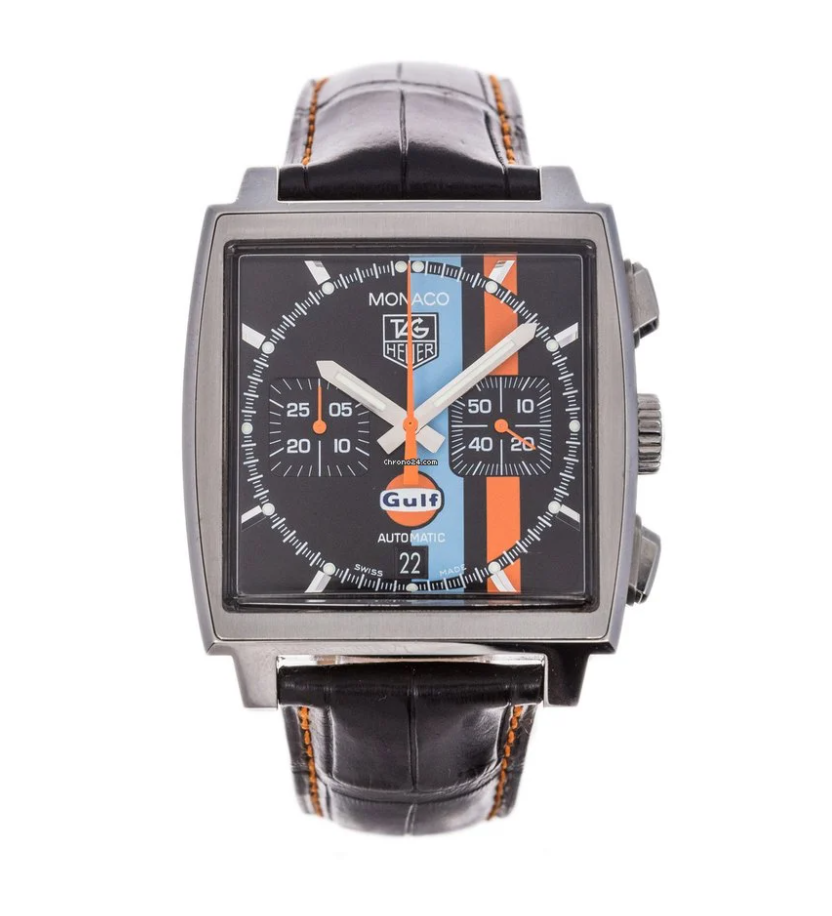
-> Limited edition Monaco Vintagewatch by Tag Heuer. The square shape, less popular, really proves itself convincingly. Although it’s a chronometer with 2 timers and a date display, the design isn’t overloaded. ($4000)
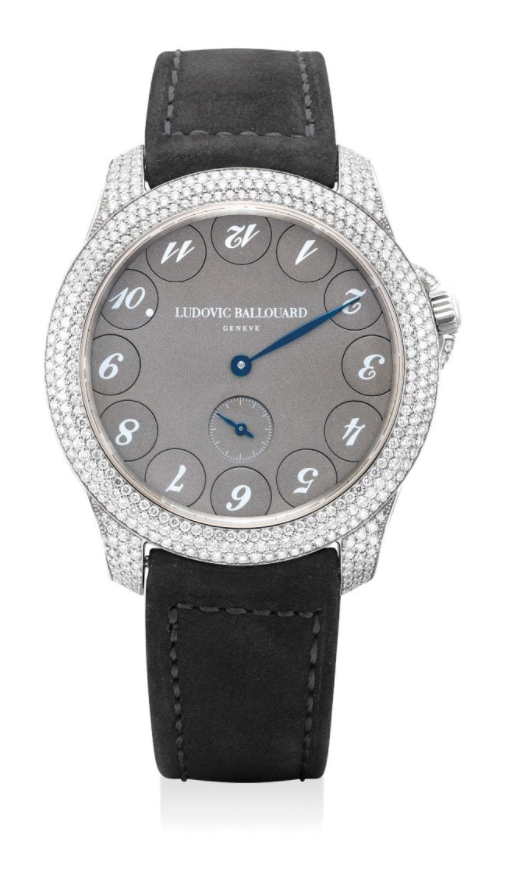
-> A really original, uncluttered Ludovic Ballouard watch, an independent watchmaker. Also note the off-centered crown which makes the watch even less classic. Platinum casing. ($75,000)
Things you should never do!
-
Wash your hands, take a shower or wash the dishes with your watch on (the hot, soapy water will ruin the joints).
-
Use your watch for everything, regardless of the activity (for sport and DIY buy yourself another watch (you can go for a futuristic digital display if you like ^^).
-
Not have read the instructions and think that it’s not working properly even when it’s working normally.
-
Change the date between -3 hours and +3 hours of the date changing normally (if your watch changes the date at midnight, do not change the date manually between 9pm and 3am), if not you’ll break an internal piece of the mechanism and the date function will still work but not all the time. Obviously this isn’t the same for digital watches…
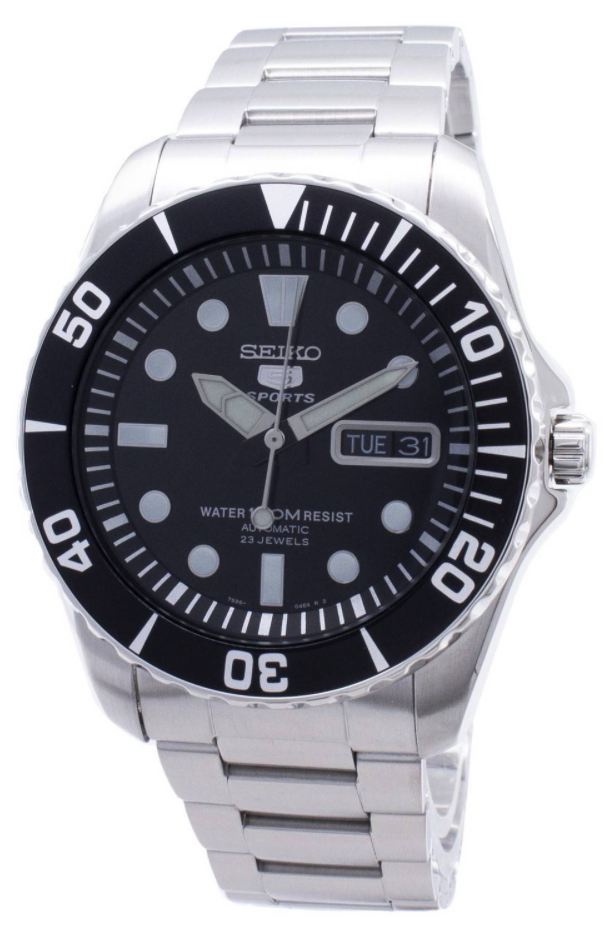
Another Seiko watch, submariner model.
So how do you choose a watch?
There are several watch brands (infinitely more than people generally think). So to find THE watch in this jungle of choice, I’ll give you a little method (it’s only an example though!):
-
If you really don’t know where to start: look at the adverts of different brands and talk to people about it (friends, family, colleagues, it doesn’t matter). This allows you to discover the universe of brands.
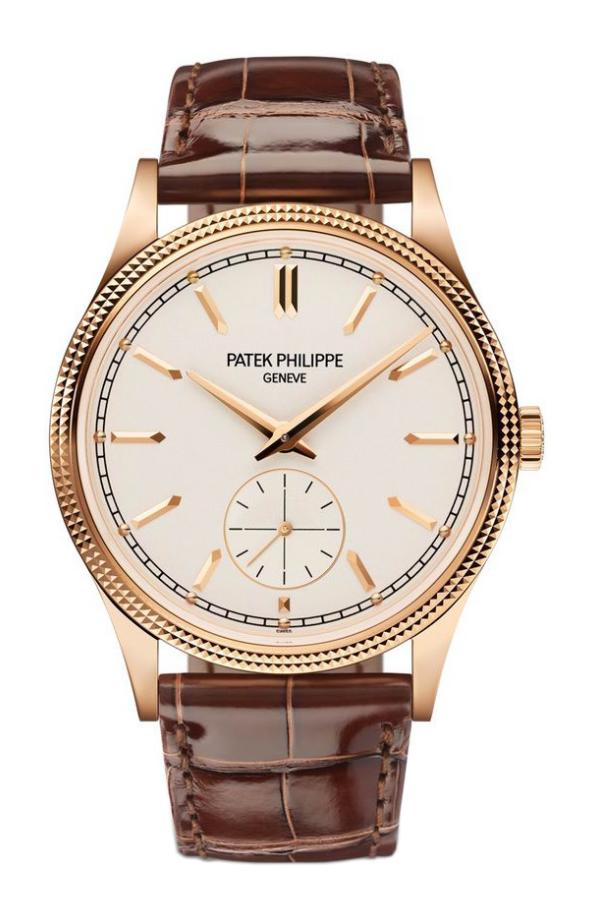
Patek Philippe hasn’t developed the same way as Tag Heuer, for example.
-
Make an image board with several watch designs that you like and don’t like, and be able to explain why this is in a few words.
-
Go to a watchmaker or a watch shop (Bloomingdales has the advantage of being able to have various brands on the same level, which will be able to give you some ideas). Don’t hesitate to really have a good look around, you’ll sometimes be pleasantly surprised!
-
Talk to a watchmaker or sales people and try on some watches, making a note of the ones you like. Ask if there are any secondhand models or end of stock ones, again you’ll be pleasantly surprised.
-
Take the time to make your decision (look at the criteria list above). Nothing is rushing you, you can always find out the time without a watch in the meantime. Remember it’s an accessory that can perfect or destroy your style! 😉
In a few weeks the sequel of Luc’s article on watches, with the theme ‘what style of watch to choose?’
What kind of watch do you wear? Do you prefer classic watches or original ones?

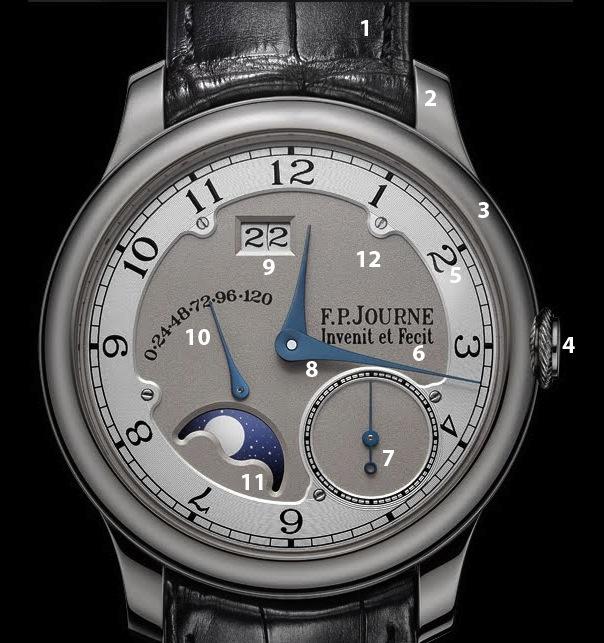
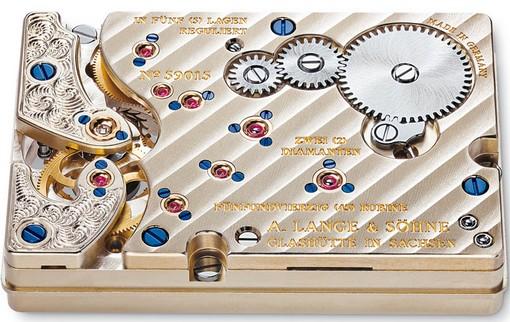
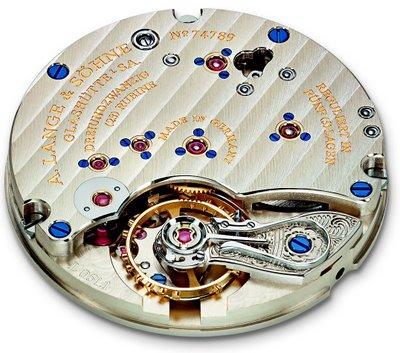
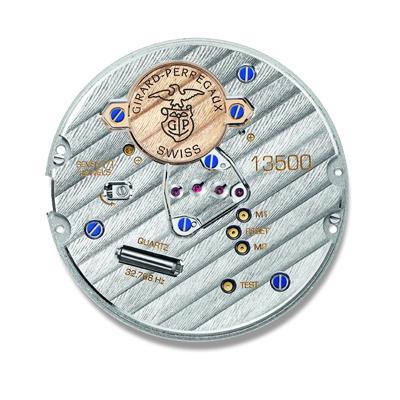
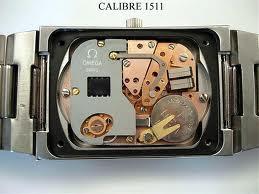

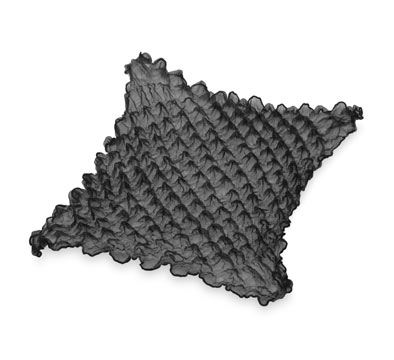
I prefer original watches because the seem to be less expensive but at the same time have the potential to be more innovative.
Hi Jonas, at the moment I do too. But I’ve seen some of my friends making a big shift with their first success 😀
Hi Dan,
Thanks for your comment, I find your reasoning a bit hard to follow. How could a whole watch be sold for $100 when the ETA movements alone is $100 ? I mean, the manufacturer and retailer have to take a margin.
In any case, this is just Luc’s opinion.
Have a good day, Nicolas.
Hi Richard,
Ineed the flashy expensive watches help a man getting noticed. The opinions in the team on that topic diverge. My opinion however, is that I don’t like this kind of watch and the image the convey. I prefer more understated and cheaper brands that have cool designs too.
Thanks a lot for your comment, that’s an interesting question.
Nicolas
Hi Wayne, it’s a cool watch 🙂